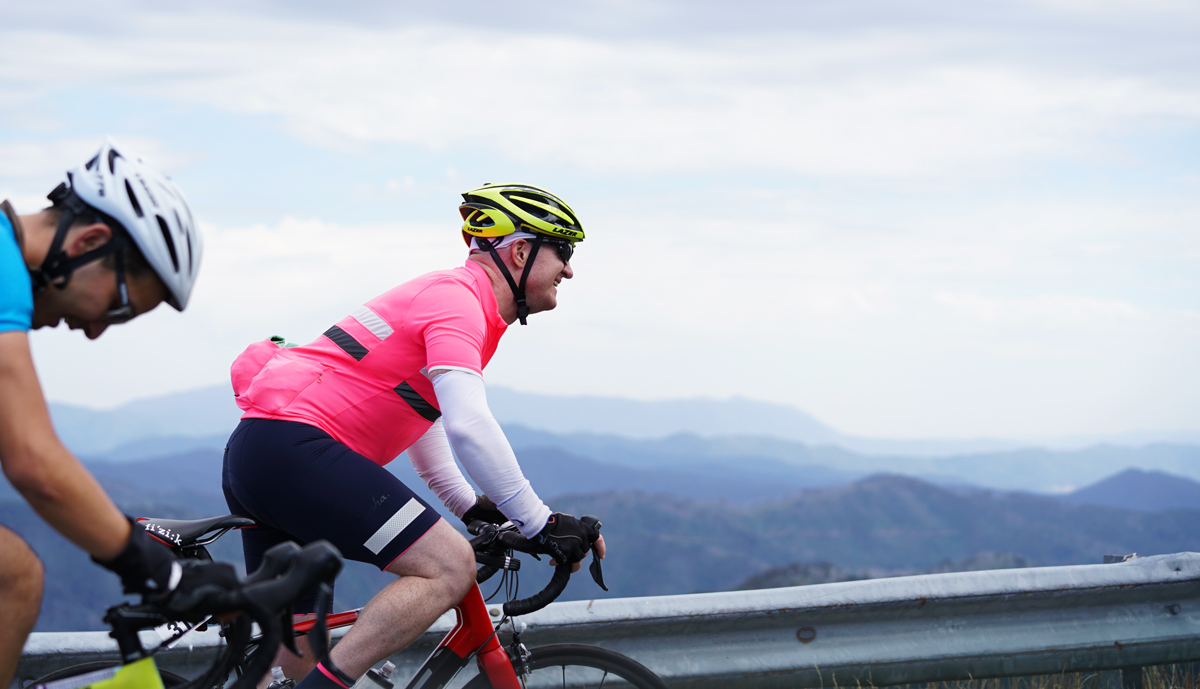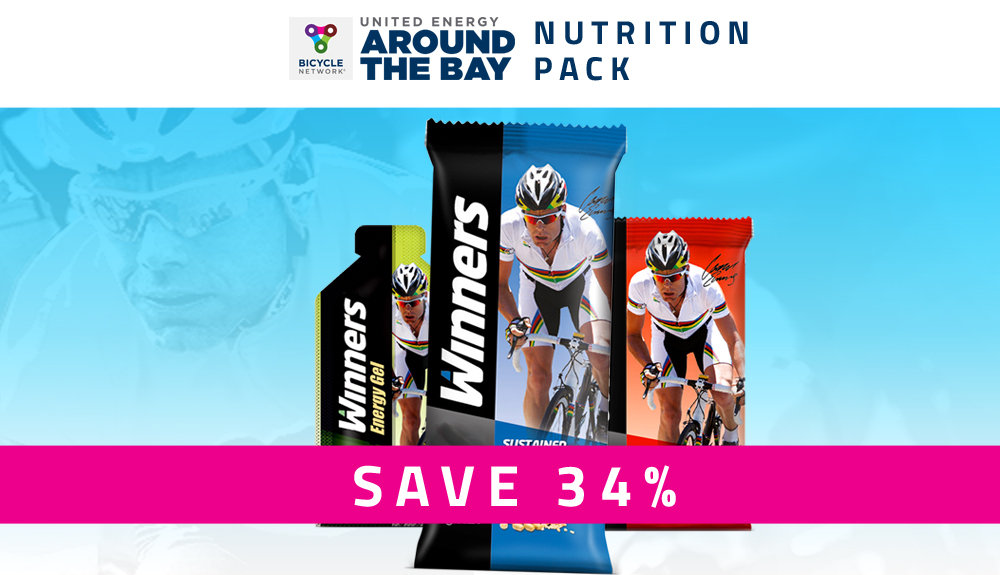Justin Benson and Hannah MacDougall from Pirates Cycling Club have sent Bicycle Network a handy write-up for those interested in taking their cycling to the next level.
If you're considering tackling long distance trips like the 210km, 250km or 300km United Energy Around the Bay rides this might help you plan your food and hydration.
So, you’ve been riding a bit, nothing too testing, the occasional ride locally, maybe down Beach Road (or equivalent) and even driven to the base of the hills and headed up for an hour or two. You are now thinking of the next step, the one that some of your friends have been discussing for a while, ‘a long ride’.
What will that mean? Do I need to shove two bananas in between my keys and mobile phone in those pockets on my back? What about my spare tubes, where will they go? How many drink bottles will I need?
All are questions that riders have asked themselves, or their friends over the ages, and the answer is always ‘it depends’.
Let’s tackle the question about nutrition and avoiding the dreaded ‘bonking’. This may not have happened on rides to date, but you may have felt lethargy from time to time.
First, we need to consider your meal the night before you head out on the longer ride. A good rule of thumb to work with is the split your plate into thirds:
- 33% non-starchy vegetables (think leafy greens, salads, cauliflower, zucchini etc)
- 33% protein
- 33% starchy carbs (e.g., sweetpotato, pasta, rice, quinoa)
Next up is your pre-meal ride. Because we are sitting down when riding a bike, it is generally easier to eat more solid foods compared with going for a run or swim.
However, everyone is different so it is good to play around with this. You want to be mainly looking at getting in some decent carbs in this meal – think perhaps some toast with honey and a banana, or porridge is a big favourite among cyclists. If you find you can’t tolerate solid foods, perhaps a smoothie or glass of juice can help get you going.
Now let’s get into the ride itself. It’s a personal choice about how much you carry, and it does depend on distance/time on the bike, the type of riding, the weather and your body, but with that said, there are some simple guidelines you can follow:
Aim to take in between 45g and 60g of carbohydrates every hour. This usually equates to 0.7g-1.0g of carbohydrates per kilogram of your weight. An 80kg-85kg rider should aim for 60g-80g of carbohydrates per hour on long rides.
These carbohydrates can be in any form (energy bars, banana, gel, drink) and usually a combination of each works well if nothing else than just variety of texture and averting boredom for your tastebuds and stomach.
For example, a gel from the typical brands usually come in at 18g-22g, a banana, protein ball, muesli bar or similar will be 20g-30g (check the nutrition guides) and an electrolyte drink will also contain about 20g, plus replenish potassium, magnesium, and sodium, all items that are regarded to assist the reduction of cramping in muscles (but note that there is no definitive ‘silver bullet’ at stopping cramps that I’m aware of!).
What does that mean? Well, when I head out for a 4-5 hour ride, (~120km), I’ll carry five gels, five bars (or one less with a banana substituted), and two bidons on the bike, one with electrolytes that I’ll have additional tablets to add to water for later in the ride, and one with water. You should always have straight up water to help settle the stomach.
I then tend to eat and drink every 30 minutes, taking in 30g-40g of carbohydrates each 30 minutes. This is critical; if you wait until you’re hungry, it’s almost certainly too late.
I’ve often said, treat yourself like a little steam engine. Steam engines need two things, solid fuel to burn, and water to create steam.
Only one of the two will help, but will not be enough to create steam. And steam engines are consistently having the fires stoked and water filled whilst on the track. Same goes for you.
After the ride, take in a mixture of carbohydrates and protein to help the muscles recover faster.
Again, porridge combined with a protein source like full fat milk or protein powder mixed with water are a good idea. Other good options include the poached eggs with toast and veggies (or an avo smash if you don’t have a mortgage). Aim to eat within 30 minutes – 1 hour of your ride, as this is when your muscles will absorb glycogen (fuel source) rapidly.
You will also need to rehydrate, and unfortunately, the sacred cup of coffee doesn’t quite cut the mustard in this sense – but have one anyway, as a reward!
An easy way is to work your way through a Hydralyte tablet in a bottle for the next hour or so. No need to be competitive and smash this down in five minutes – you will just be unsociable and needing a bathroom soon afterwards. Drink it slowly throughout the hour to gain maximum absorption of the fluid.
Stretching and resting will also help you to restock for your next ride. Other recovery techniques include:
- Get out the foam roller, inflict some ‘self-love’
- Stick your legs up in the air (against a wall) for ten minutes
- Practice some meditation or mindfulness
- Have an Epsom salt bath
- Smash out some turmeric for its anti-inflammatory properties
- Have a 15 minute nap
And lucky last – start getting ready for the next bike adventure that you’ve already begun to plan in your head.
Enjoy!
Written by Justin Benson and Hannah MacDougall
Need some nutrition?
If you're ready to take on a big ride and want to try some cycling-specific nutrition options, Winners Sports Nutrition is a good place to start.
Winners Sports Nutrition are the Official Energy Bar & Gel of United Energy Around The Bay 2019. Their products have been developed specifically for cyclists and are used and recommended by cycling champion Cadel Evans.
A special 10 per cent discount offer is available for all United Energy Around the Bay riders. Click here to access this offer and read more about Winners Sports Nutrition.



